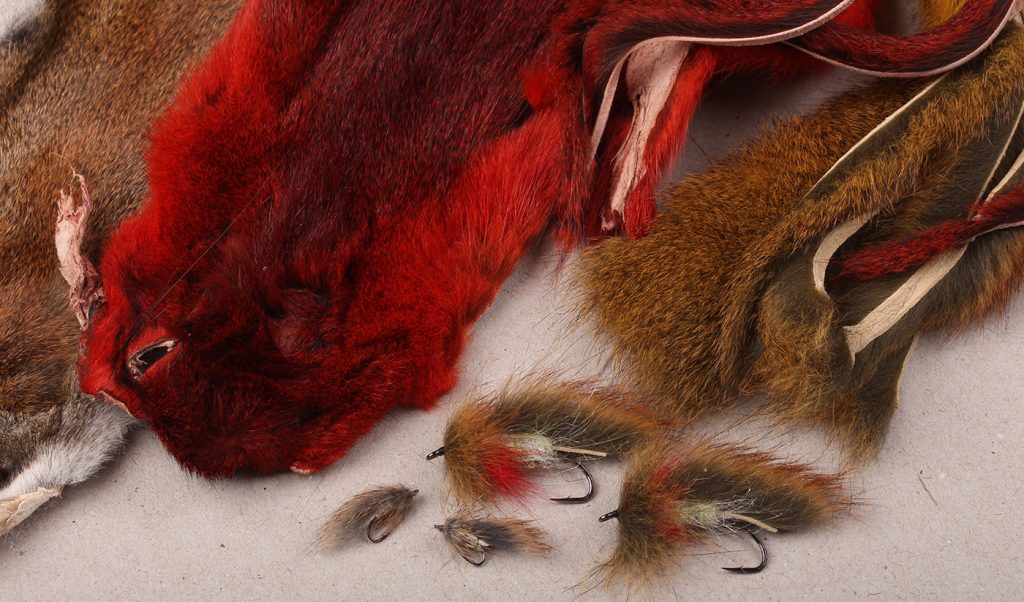
Most of us probably have too many fly tying materials. Do we really need it all? Certainly not, not least because some materials are good for many different flies if you are a little creative. Finding substitutes for original materials became necessary already around the turn of the century, because many materials became hard to get.
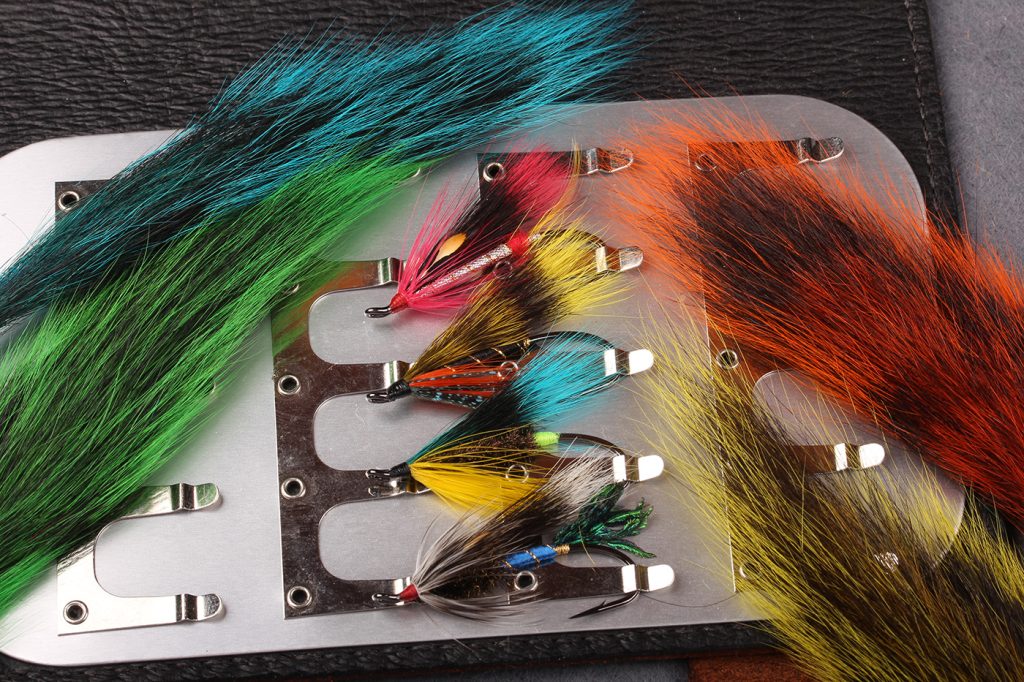
One material that is almost universally useful is a squirrel skin. The long, straight hair from the tail are found in many streamer patterns and salmon flies. The silver tippet squirrel tails can be dyed and as such, they are popular for many salmon flies. The natural siler tippet tail is a good substitute for the gray fox used in the Rusty RAT. Dyed yellow squirrel tail is a good choice for a Munro Killer.
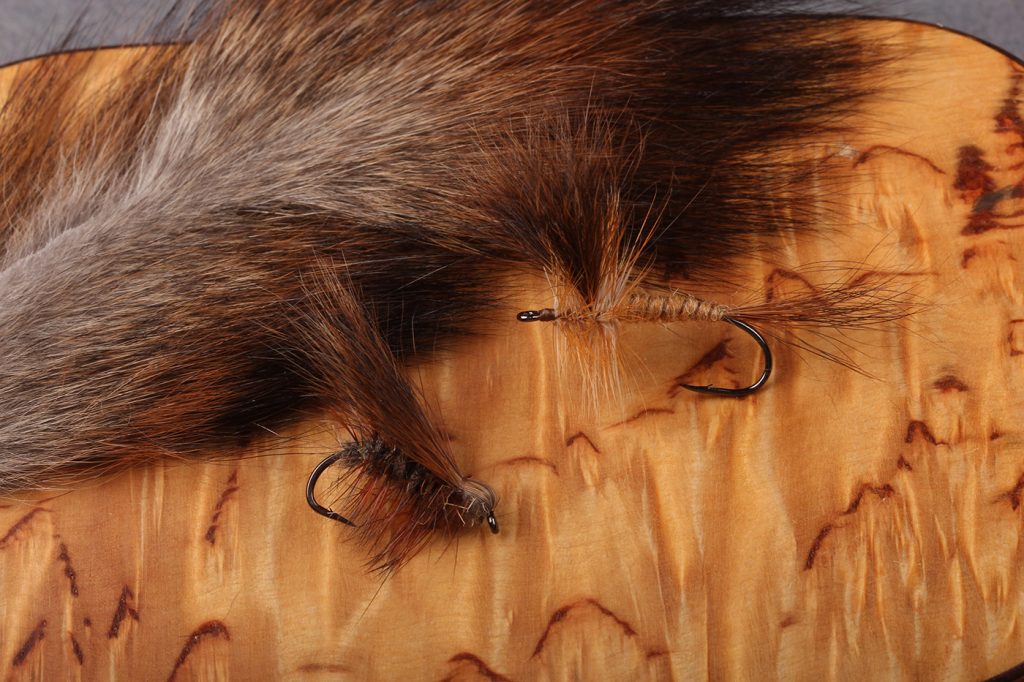
It also finds use in dry flies. Lars Åke-Olssons caddis imitation has a wing of squirrel tail and uses the body hair for dubbing. With a natural red palmer hackle the sky floats well and is well suited for fast water.
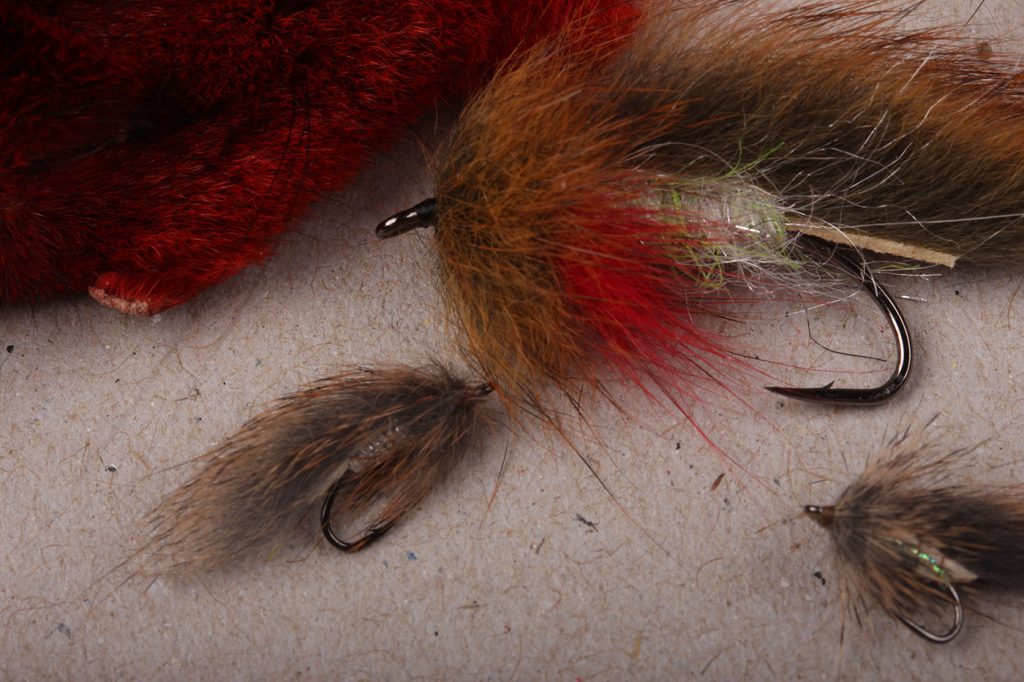
A full squirrel skin is easy to find in the shops today and the thin hide with short hair makes it very useful for small zonker flies. If you look carefully, you can find skin suited for zonkers as small as size 20.
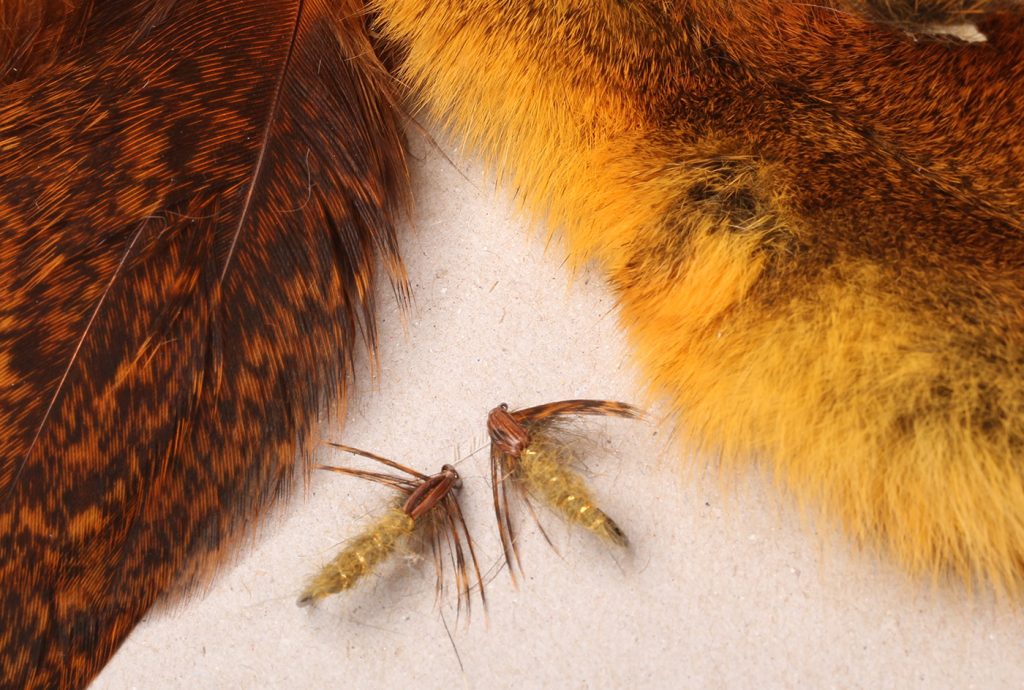
The soft body hair is also good for dubbing. The grizzly coloured body fur gives a fuzzy and transparent body on a fly. If you mix in a little guard hair you end up with something that resembles hare’s ear dubbing.

Fox Squirrel Nymph is an American fly, which is tied completely with hair from a grey squirrel. The light ginger coloured fur from the sides of the skin is used for the abdomen on the fly. The grey fur from the back is used on the thorax. Just like a Hare’s Ear Nymph it can be varied in size and colour shades to imitate a lot of different insects.
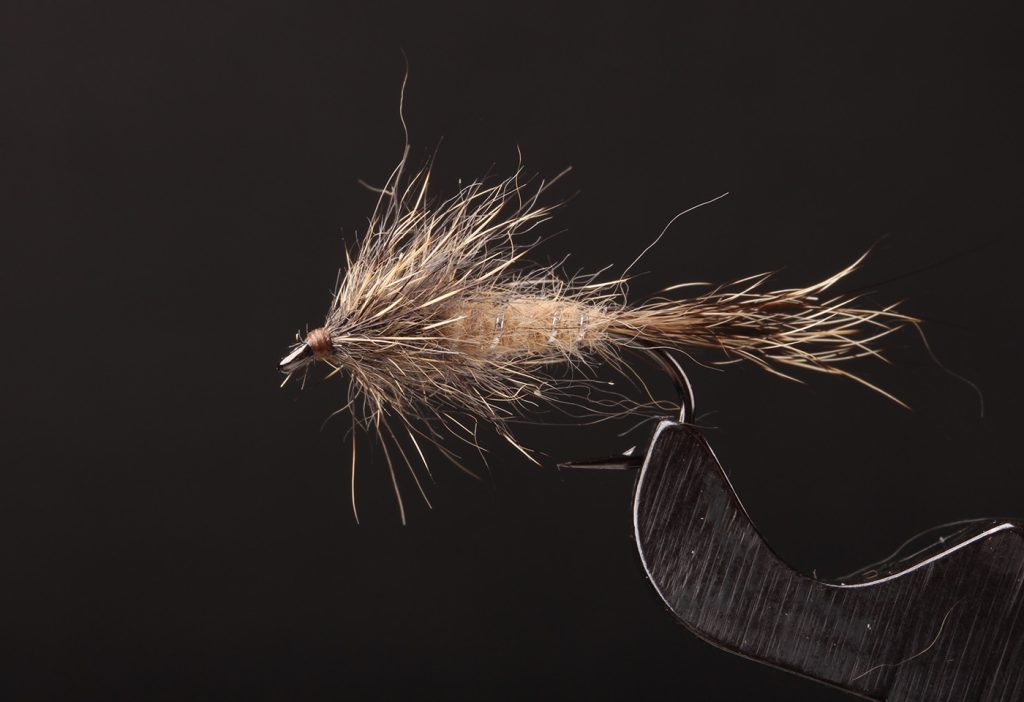
Fox Squirrel Nymph
Hook: Ahrex FW560, size 8-14.
Weight: Lead free wire.
Tail: Guard hair from a squirrel skin.
Abdomen: Ginger fur from the sides of the skin.
Rib: Fine oval silver tinsel.
Thorax: Grey dubbing from the back with a little guard hair mixed in.
Step-by-step:

The materials used.

Wind on the lead free wire.
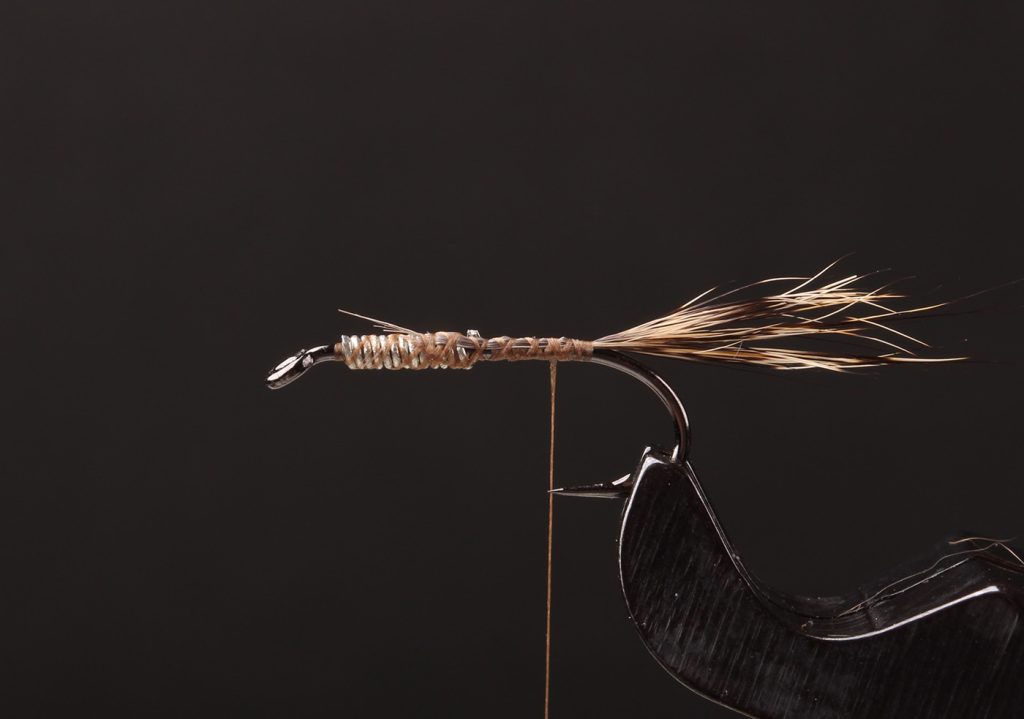
Tie in the thread and win over the lead free wire. Continue to the hook bend and tie in a bunch of guard hair, somewhat shorter than the hook shank.

Tie in a piece of oval silver tinsel.
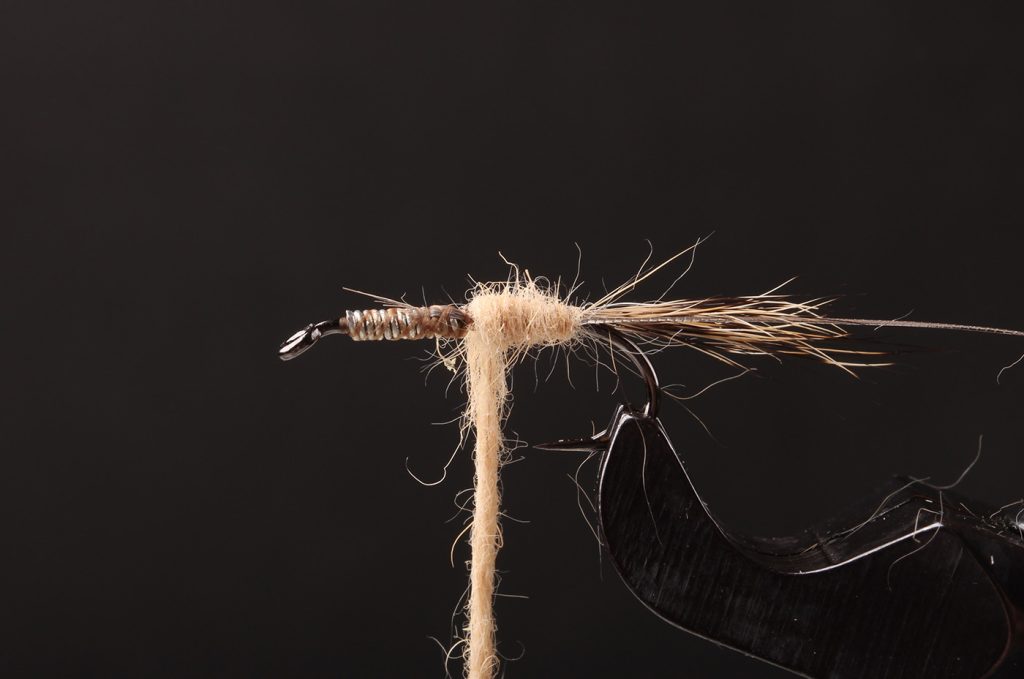
Scrape or cut a little fur from the side of the skin. Dub it on the thread and form a tapered body that covers just over half of the hook shank.
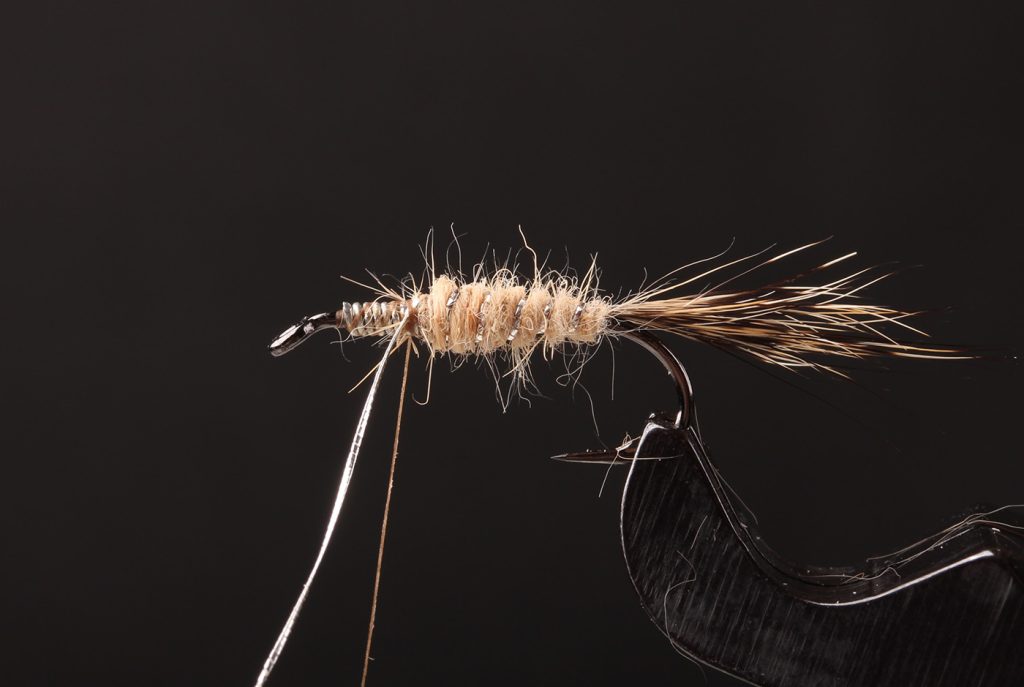
Wind up the rib in 4-5 turns.
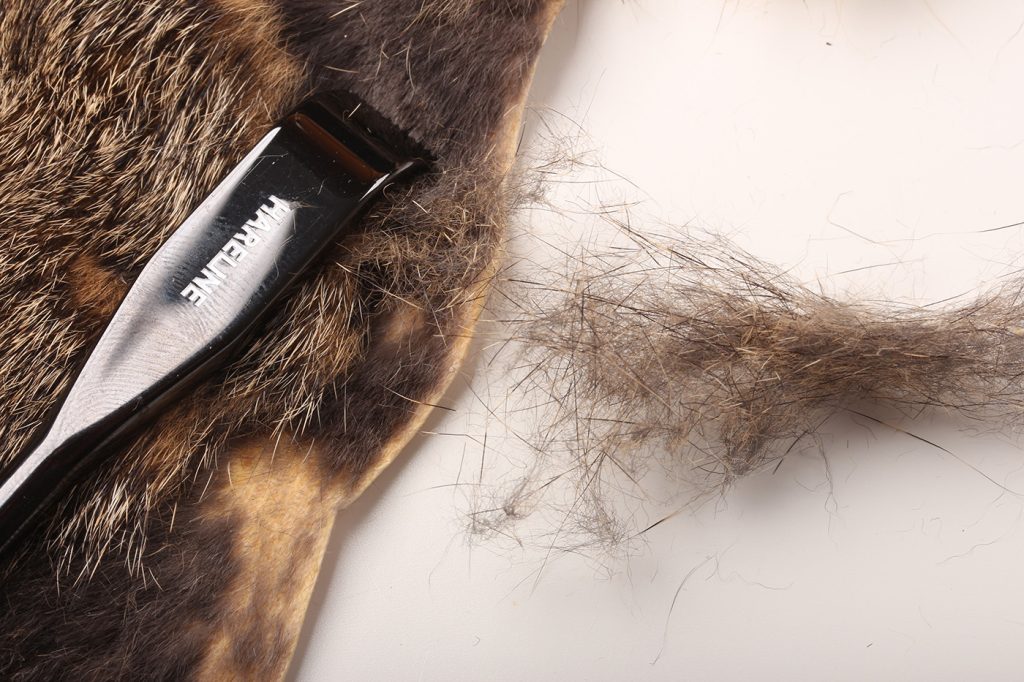
Scrape or cut a little fur from the back of the skin – make sure to get some guard hair in the mix.
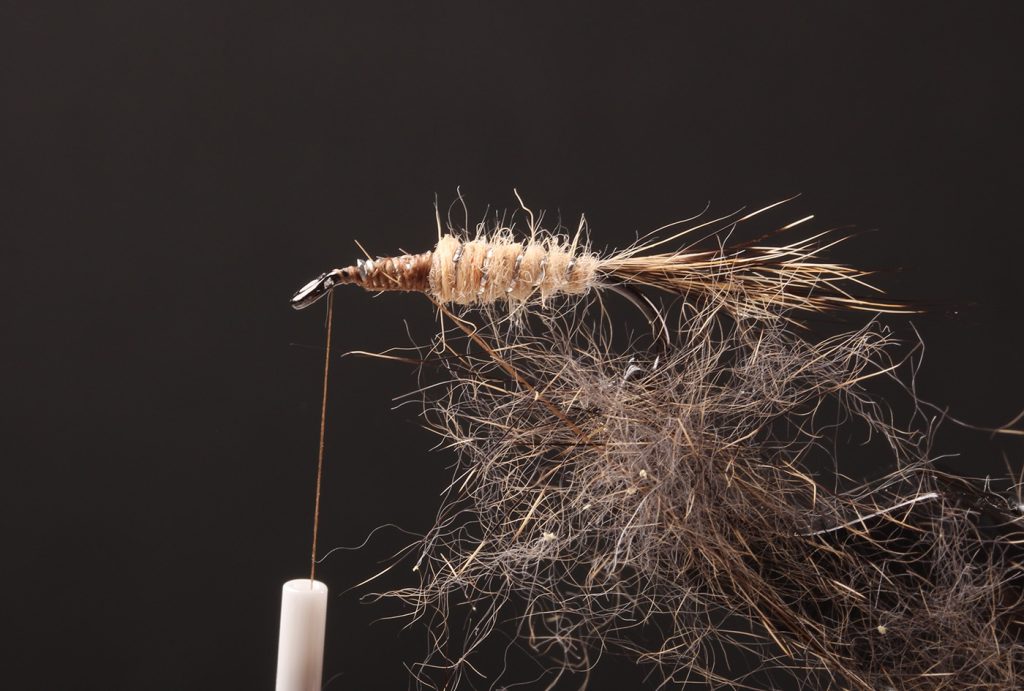
Make a dubbing loop and place the mix between the legs and spin the loop.
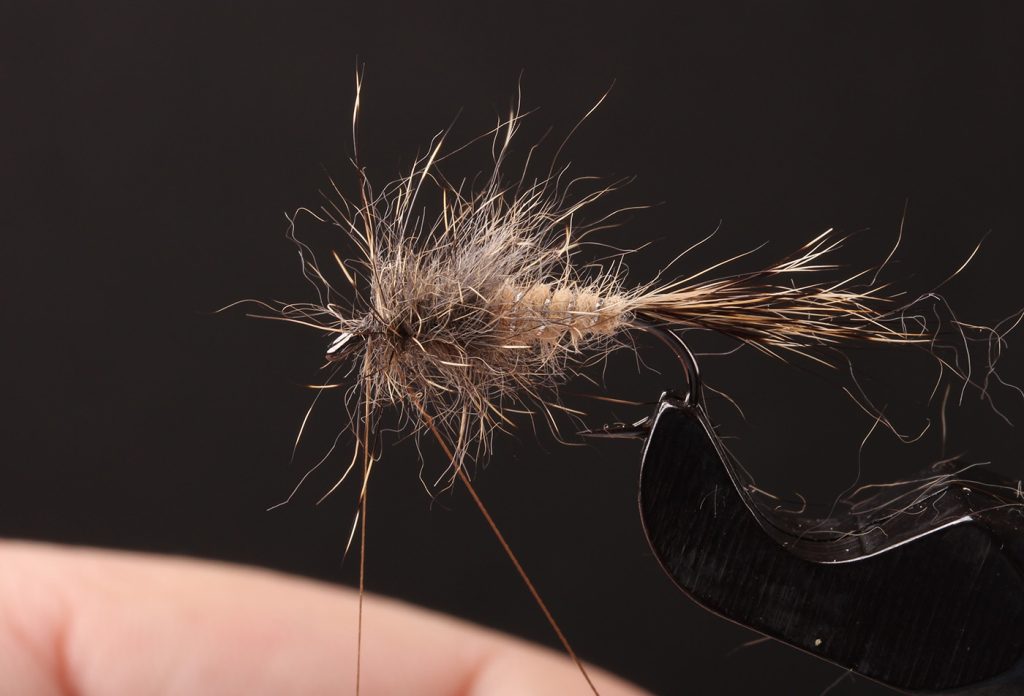
Wind the dubbing loop forwards and form the thorax. Tie in just behind the hook eye and cut off. Whip finish the thread.

Rough up the thorax with a velcro brush.
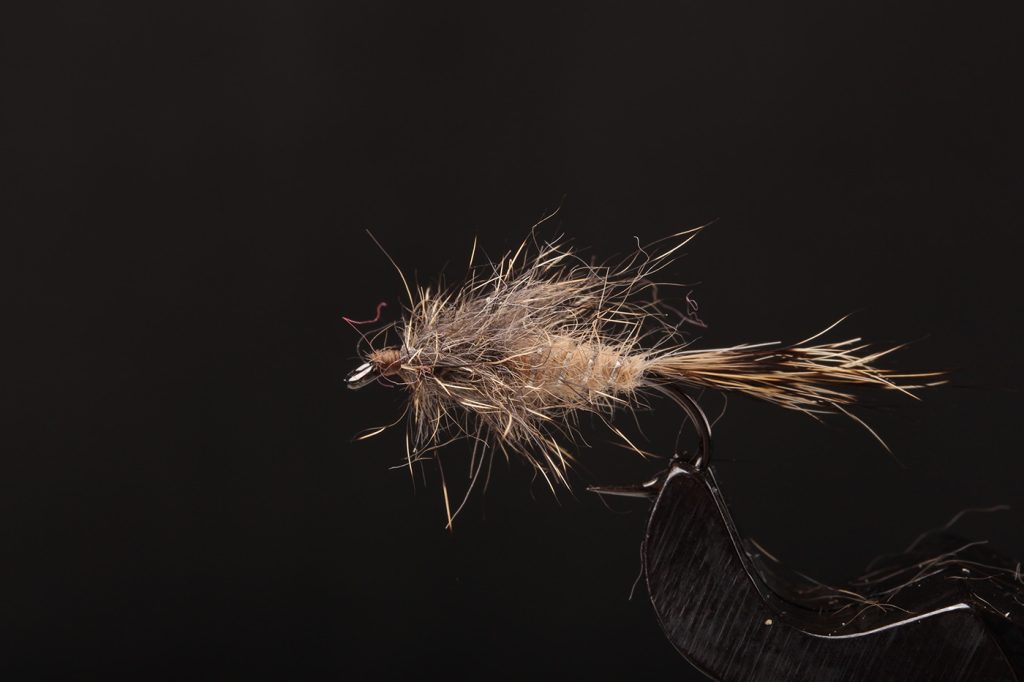
The finished fly.
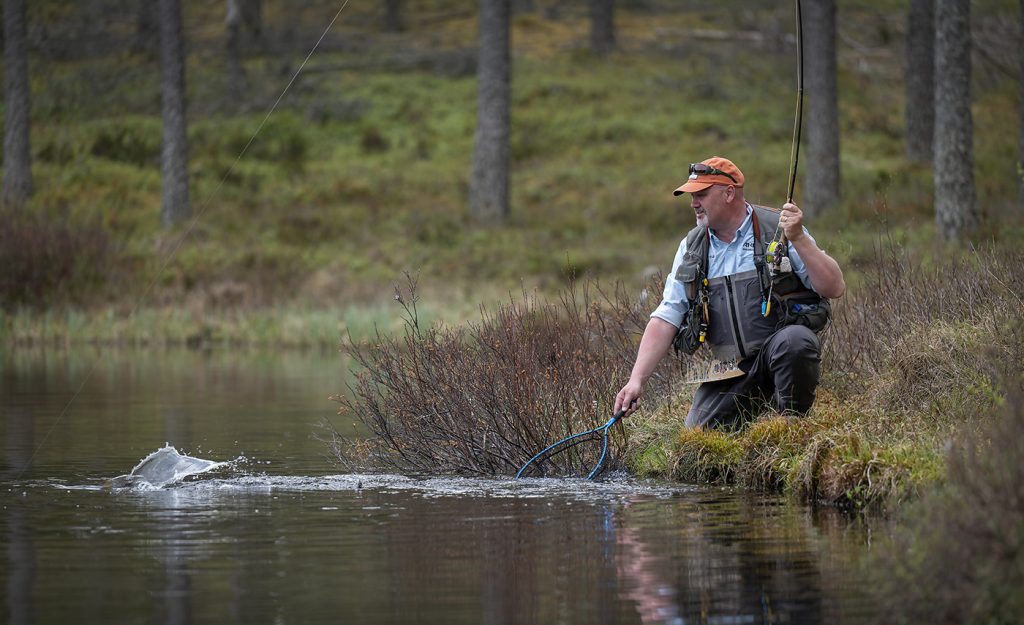
This blog is written by Håkan Karsnäser.
